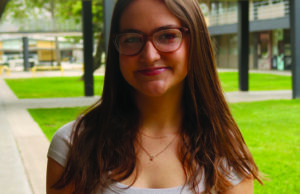The AP Art History course is far from diverse

In the spring of 2020, I signed up for the AP Art History course with high hopes. I was looking forward to the “investigation of diverse artistic traditions of cultures,” which the course and exam description so relentlessly emphasized. I am halfway through the course and can confidently say that the word “diverse” was tossed in solely for effect.
My family comes from India, and when hearing of my course they were curious if artworks from the Indus Valley, one of the earliest civilizations in history, would be studied. I decided to check the course description and found two content areas dedicated to Asia. That meant that one-fifth of the course was focused on Asia, which seemed reasonable until I found almost four content areas are dedicated to Europe. Not only this, but the Asian content areas have roughly 40 less artworks (out of 250) than the European content areas.
Initially, I thought perhaps Europe was simply more artistically inclined. But after doing some research, it was clear I was wrong. There were plenty of artworks created in Asia and earlier than the majority of the European works. The course simply targeted Europe, therefore taking away all meaning in the word “diverse.”
Our seventy-five minute classes are filled with variations of European art, focused on what typical eurocentric art was, the religious admiration of Christ. I’m not saying these works aren’t important, but it has become redundant, especially when other culture’s artworks could be incorporated into this time. A diverse curriculum should go into equal depth on different cultures. In this course, we’ve gone into vast detail of European religion studying more than one hundred artworks, yet a grand total of four artworks in India.
I have been lucky enough to go to Europe and view many of the works we study and they are breathtaking. However, there are breathtaking works of art in other parts of the world and students will never know that because they are not exposed to them in the course.
I think a course, specifically AP Art History, should be well rounded and able to teach students about more than just one part of the world. Either the course itself needs to fundamentally shift to reflect the “diversity” it claims to have or the course should be relabelled as “AP European Art History” to let students know exactly what they signed up for. Students deserve to have the knowledge of artistic forms from all across the world, something that this class doesn’t provide.



